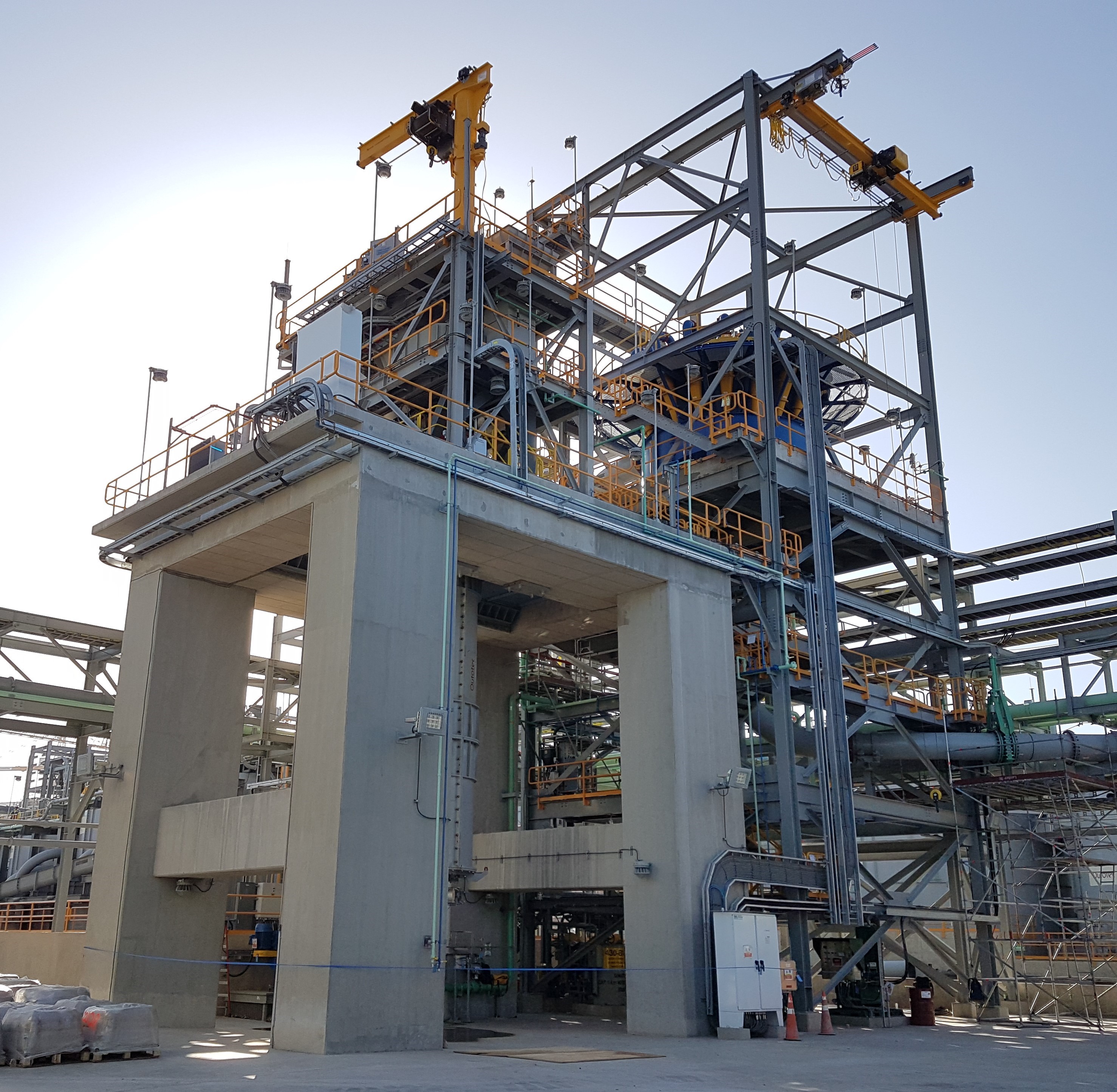Vertical Grinding Mills

The ceramic grinding beads in the vertical ball mill´s shell are put in motion by the grinding rotors which are mounted on the mill shaft. The mill shaft is powered by a motor and gearbox arrangement. The high packing density of the grinding media produces strong friction, which causes efficient grinding of the mineral slurry. The variable speed of the milling shaft allows for an energy efficient grinding process to reach the required product particle size.
The feed material is supplied as a slurry from below or lateral by a feed pump. The mineral particles, which become smaller during the grinding process, rise up in the mill cylinder and leave the mill via a natural overflow on top. Gravity supports to retain the grinding beads, which have a higher density than the slurry, in the milling chamber.
The fineness of the final product slurry is adjustable through the following factors:
- Feed rate
- Slurry concentration
- Amount and size of grinding beads
- Speed of the mill shaft
- et al.
Key Benefits:
The mill portfolios of our customers provid the following key benefits to the mining industry:
- High energy intensity
- Efficient transfer of energy from the mill shaft into the grinding bed
- Low required specific grinding efficiency (SGE)
- Steep particle distribution curve (PSD) without external classification
- Single pass grinding (no re-circulating loads)
- High flexibility to handle fluctuating process conditions:
- Fluctuation in slurry feed rate
- Fluctuation in slurry particle feed size
- Slurry consistency
- Ore characteristics
- Required product size
- Simple flow sheet leads to cost reduction
- Minimized footprint due to vertical milling arrangement
- Easy maintenance
- High availability due to long maintenance intervals
- Swift changeable wear parts
Both CAPEX and OPEX are significantly minimized with these grinding mill technologies of our customers.
Engineering excellence:
KMF and its network partners has the required Know-how to provide the necessary engineering services, such as:
- Finite element modelling and analysis of the separate mill components as well as the complete mill
- Identification and mitigation of resonance frequency issues
- Design and build in accordance with project specific seismic requirements
- Design of all main structural components to withstand the applied dynamic forces as well as calculation of expected lifetime
- Spare part management support
- Creation and implementation of the control and protection philosophy for the regrind mill
- Drive system engineering
- Wear parts optimization due to inhouse polyurethan coating technology

